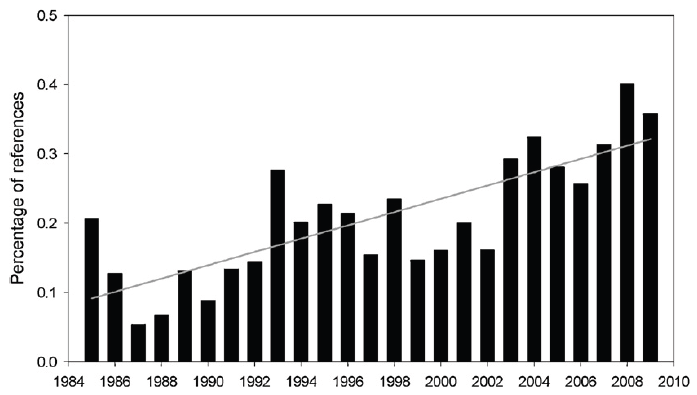Graph of the Day: Trend in Published Reports of Climate-related Forest Mortality, 1985–2009
ISI Web of Science search of the trend in published reports of climate-related forest mortality in the scientific literature, for the years 1985–2009. Plotted bars show the percent of references using the topic words “forest AND mortality AND drought”, relative to all “forest” references. Line represents the linear regression model fitted to the data (R2 = 0.61; F = 35.73; p < 0.001). Documentation of climate-related forest mortality in association with recent warming and droughts is rising rapidly, and in some of these cases the droughts have been the most severe of the last few centuries. Furthermore, recent research indicates that warmer temperatures alone can increase forest water stress independent of precipitation amount (Barber et al., 2000). In addition, new experimental results show that warmer temperatures can greatly accelerate drought-induced mortality (Adams et al., 2009, and associated correspondence). If the recent increase in mortality reports is indeed driven in part by global climate change, far greater chronic forest stress and mortality risk should be expected in coming decades due to the large increases in mean temperature and significant long-term regional drying projected in some places by 2100, in addition to projected increases in the frequency of extreme events such as severe droughts, hot extremes, and heat waves (IPCC, 2007a; Jentsch et al., 2007; Sterl et al., 2008).
